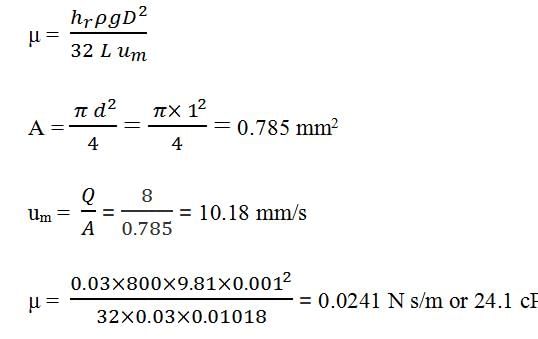Test: Measurement of Pressure, pH & Viscosity- 2 - GATE MCQ
25 Questions MCQ Test - Test: Measurement of Pressure, pH & Viscosity- 2
A capillary tube is 30 mm long and 1 mm bore. The heat required to produce a flow rate of 8 mm3/s is 30 mm. The fluid density is 800 kg/m3. Calculate the dynamic viscosity of the oil.
Taking question 7 into consideration, and calculate the kinematic viscosity of the oil.
Which of the following factors do not determine the Blood viscosity?
At the bottom of a uniform cylindrical vessel of 30 cm height a horizontal capillary tube of 2mm inner diameter and 10 cm length is connected to discharge the liquid. Calculate the rate of discharge of the liquid if the vessel contains water of viscosity 0.01 poise to its 2/3 capacity. Take the density of water as 1 gm/cc.
Taking question 10 into consideration, and Calculate the rate of discharge of the liquid if the vessel contains oil of viscosity 0.84 poise to its 2/3 capacity. Take the density of oil as 0.9 gm/cc.
Operation of McLeod gauge used for low-pressure measurement is based on the principle of
Which of the following is not a type of pressure sensing element?
Piezometer is used to measure the pressure of a
A manometer is used to measure the pressure of a
A manometer is used to measure the pressure of a
A differential manometer is used to measure the pressure of a
A differential manometer is used to measure the pressure difference between two points in a flowing
A U-tube manometer is used to measure the pressure of a
A inverted tube manometer is used to measure the pressure difference between two points of a
A Bourdon tube pressure gauge measures
Bourdon tubes are generally made of
Which of the following is a mechanical gauge?
The simplest form of manometer used for measuring moderate pressures is
Inclined single column manometer is useful for which of the pressure
pH meters can be considered as voltage sources with which of the following internal resistances
The electrodes used in pH measurement have which of the following internal resistances?
Which of the following is not a failure in pH meters?



















